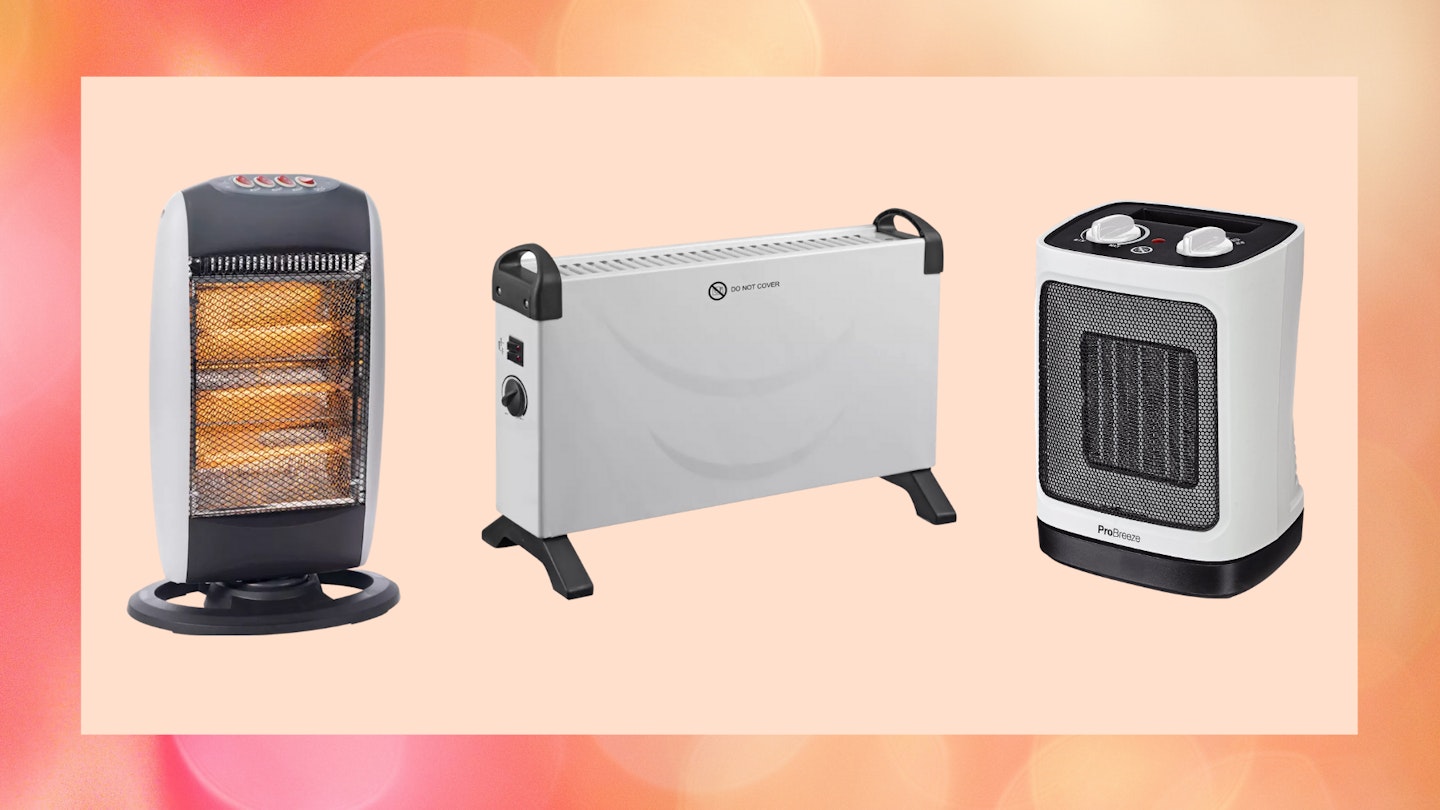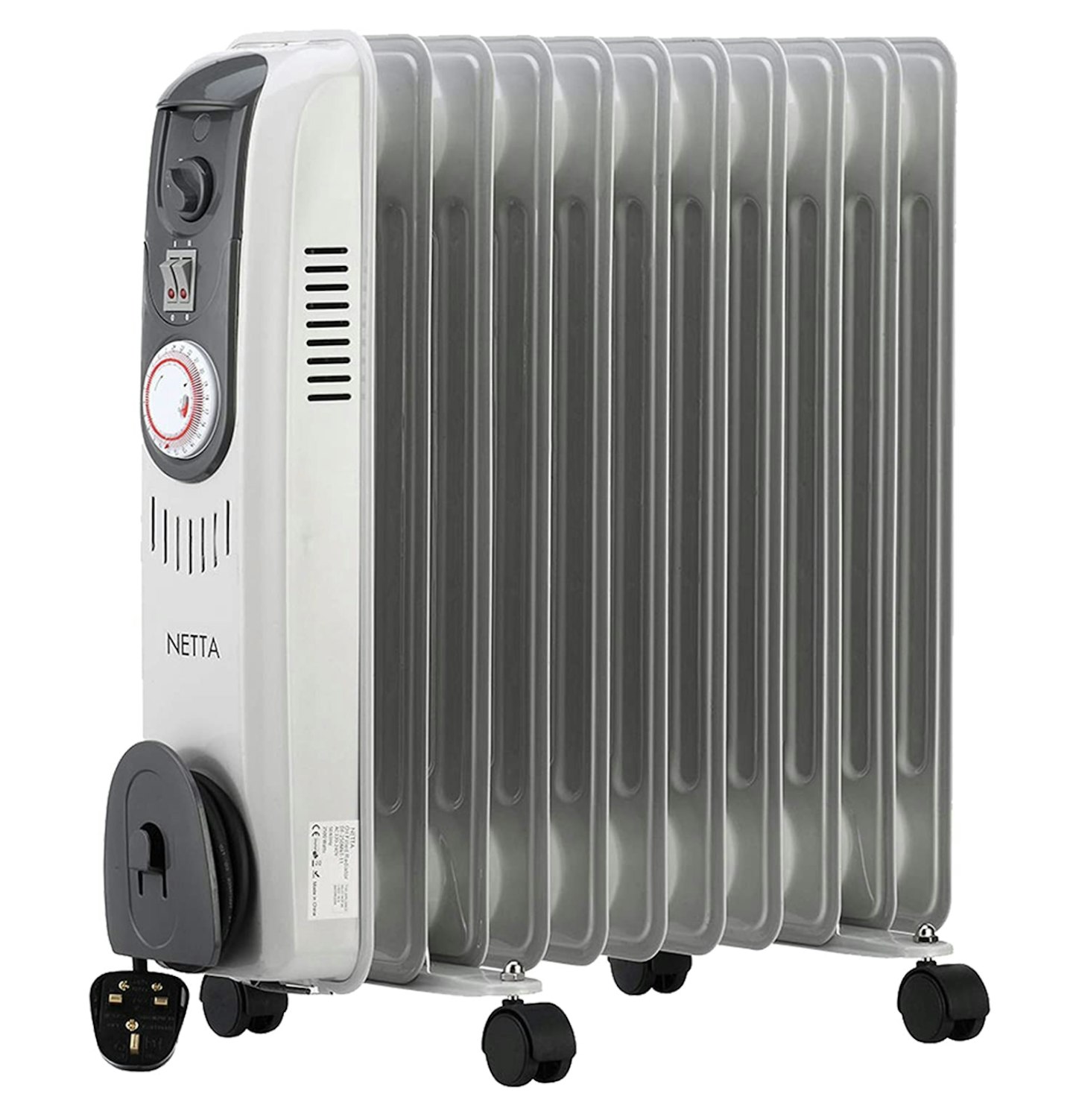As autumn and winter set in, it's normal for us to layer on the socks and jumpers, crank up the heating, switch on the electric blanket and reminisce about how lovely and warm summer was.
However, if you're spending more time in your home or working from home, you might not want to fire up the heating as often as you need to. No one wants to work in a freezing cold house, but do you really want your bills to suddenly shoot through the roof? If this is the situation you're faced with, a portable heater could be for you.
There are loads of different types of heater on the market; from fan heaters to oil-filled heaters, so how do you know which one is right for you?
Keep reading for our pick of the best portable heaters according to real reviews, plus our FAQs on all the variants on offer.
The best portable heaters
Amazon review: "Bought as a winter heat back up to run overnight on economy 7. Really does warm my whole house up that's open plan. Actually had to turn it down once heated up as was too warm. So excellent to keep winter chill away without leaving the central heating running."
| Power: | 2500W |
| Weight: | 11.3kg |
- Adjustable thermostat
- Two power settings
- Built-in 24-hour timer
- Easy-glide castor wheels
- Carry handle
- 1.5M power cable and built-in cable tidy
- Overheating protection
Argos review: "Was looking for a heater for a while before I chose this one. Very happy. Kicks out the heat really well. On eco mode you can set the thermostat up to 26°, and for quick heat up you can have it set up to 36° on mode 1 or 2. The remote is a godsend. Not having to keep going over and fiddling with the buttons is great. Also the fact it oscillates is good. Amazing little heater. Saw some reviews saying it's noisy but I wouldn't say it is. Definitely quieter than every other fan heater I've had."
| Power: | 2000W |
| Weight: | 2.2kg |
- PTC ceramic technology
- Two heat settings
- Remote controlled
- Timer
- Safety cut out switch
- Self-regulating output according to temperature of room
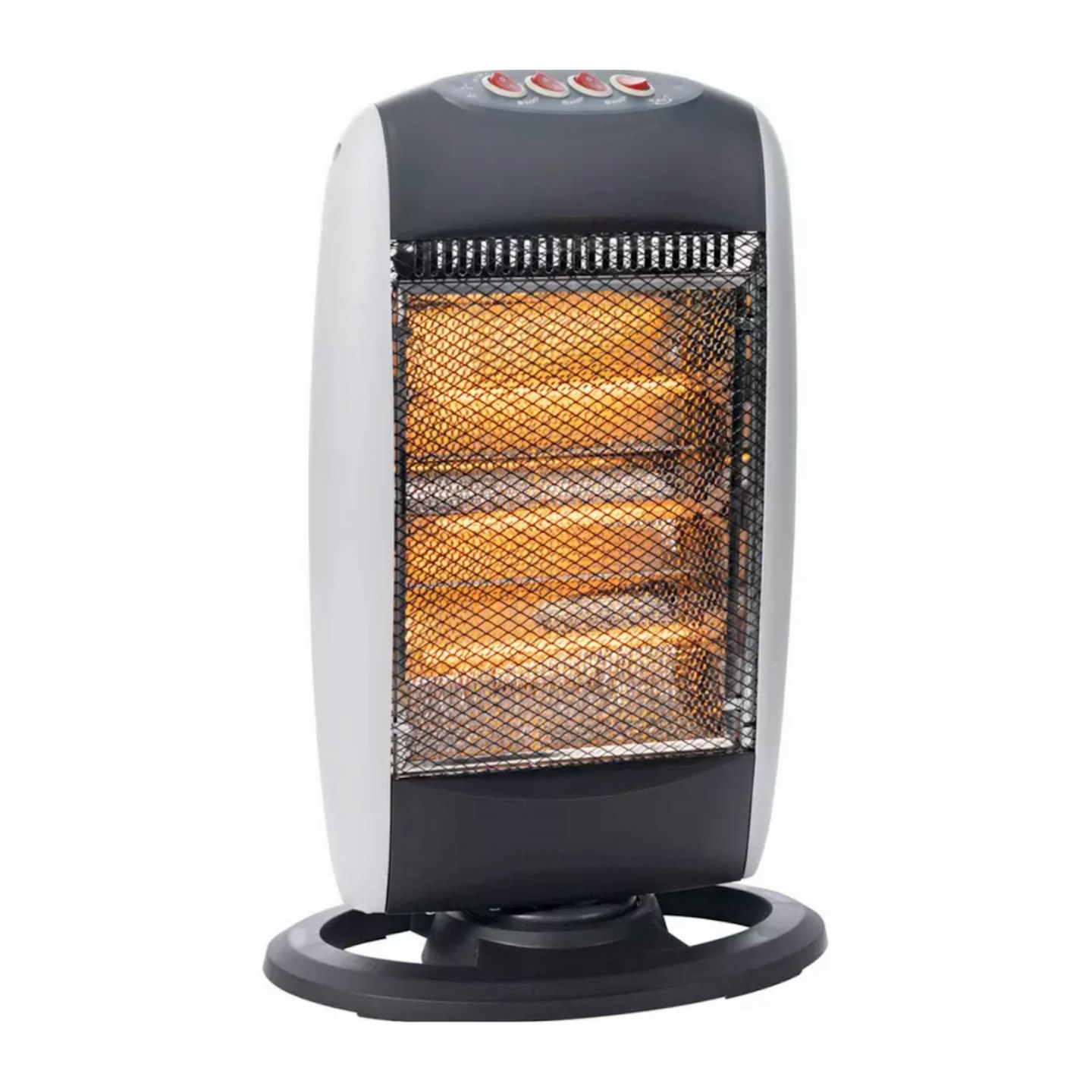
www.argos.co.uk
Argos review: "I bought this heater to help the plaster dry in my new extension. For such a small heater it is brilliant and kicks out loads of heat. It is also silent. It has an automatic cut out when moved, great in case it gets knocked over. I would highly recommend."
| Power: | 400-1200W |
| Weight: | 1.2kg |
- Three heat settings: 400W, 800W and 1200W
- Safety cut out switch
- Removable halogen tubes for ease of replacement
- Carry handle
- Silent operation
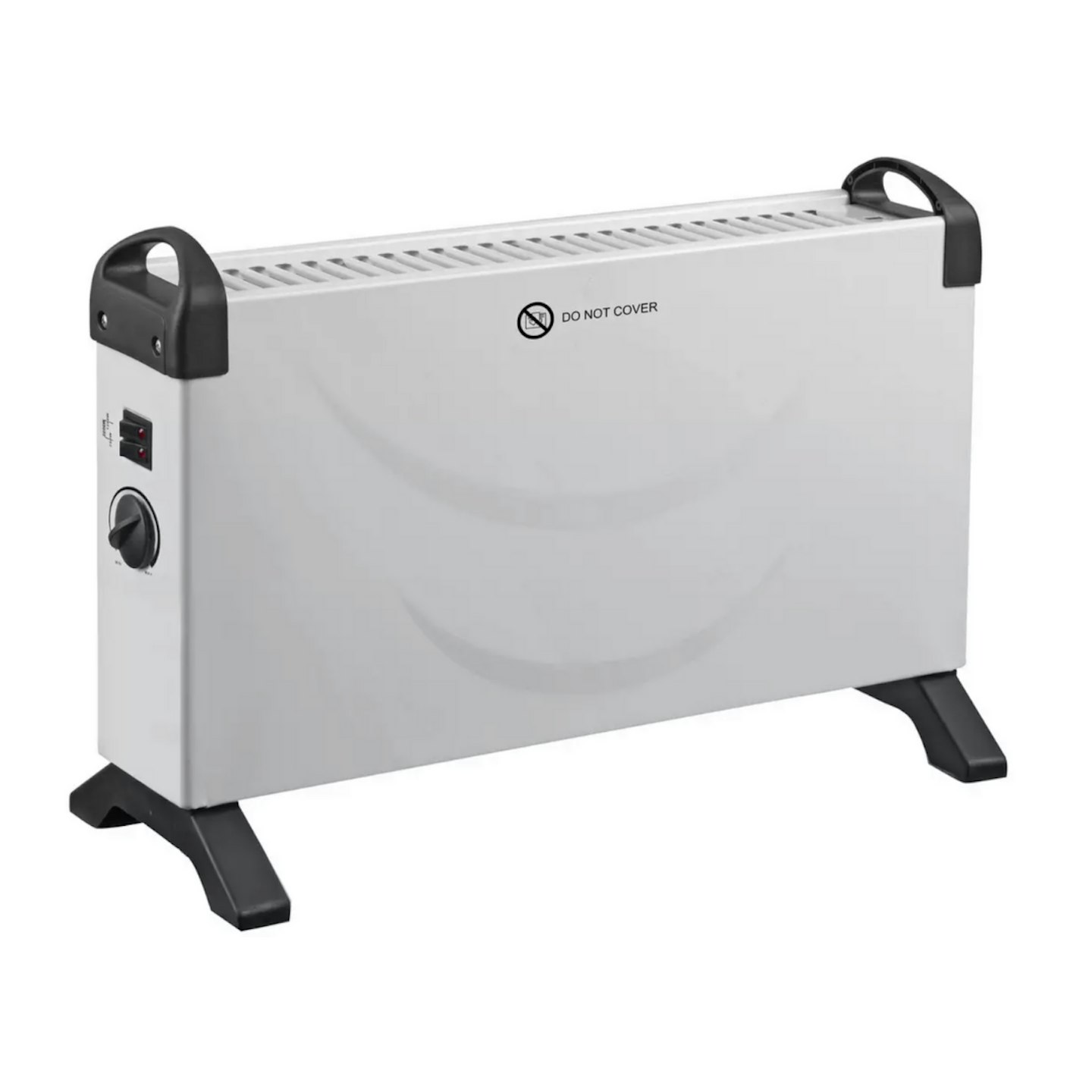
www.argos.co.uk
Argos review: "I bought this for my mother-in-law whose boiler was playing up. Light weight, easy to operate and certainly throws out the heat. I like it that is has a safety cut out if it accidentally gets knocked over. Overall a good price for a decent product."
| Power: | 2000W |
| Weight: | 2kg |
- Three heat settings
- Safety cut out switch
- Tip over protection
- Thermostatically controlled
- 1.5m cord length
How will a portable heater affect your bills?
According to OVOenergy, "If you use several standalone heaters as the main source of heat all over your home, they’re likely to be more expensive than a central heating system – even if you choose heaters with the best energy ratings.
"However, if you only ever heat one room at a time, a single energy-efficient heater could work out cheaper than central heating. To make sure you use as little energy as possible, it’s vital to choose the right heater for your purposes and space, and use controls to regulate the heat and time when it’s in use."
While different types of heater will vary in efficiency, if you leave any new appliance on for eight hours a day, you will notice a difference in your electricity bill. The best way to use a portable heater is to only use it when you need it, in short bursts at a time.
You can also make sure to purchase the space heater that suits your needs, to avoid getting a nasty surprise when your bill comes in.
Types of space heaters
Fan heaters
Fan heaters use a metal coil to generate heat, which is then blown around the room by the fan.
Pros
• They're affordable, lightweight and can warm small spaces quickly. These would be ideal to have in your home office for a quick burst of heat.
Cons
• They can be noisy, and the heat can be lost quickly. They are dangerous if left too close to furnishings and curtains. They can blow dust around, so may not be suited for those with allergies.
Ceramic heaters
If your fan heater is also classed as ceramic, it means it contains heating elements attached to ceramic plates. The fan blows the warm air around the room.
Pros
• These can provide a good amount of heat for their size and are great for smaller rooms. They're compact, lightweight, and safe to the touch. As the elements are surrounded by the ceramic parts, this heater is safer if the heating elements fail. Ceramic heaters tend to be more efficient than regular fan heaters.
Cons
• If your ceramic heater doesn't have a fan, it can take a while to heat up a room and it may not do it evenly. If it does have a fan, it can be noisy and will need regular maintenance to keep the fan clean. As with any fan heater, it can blow dust around so may affect those with allergies.
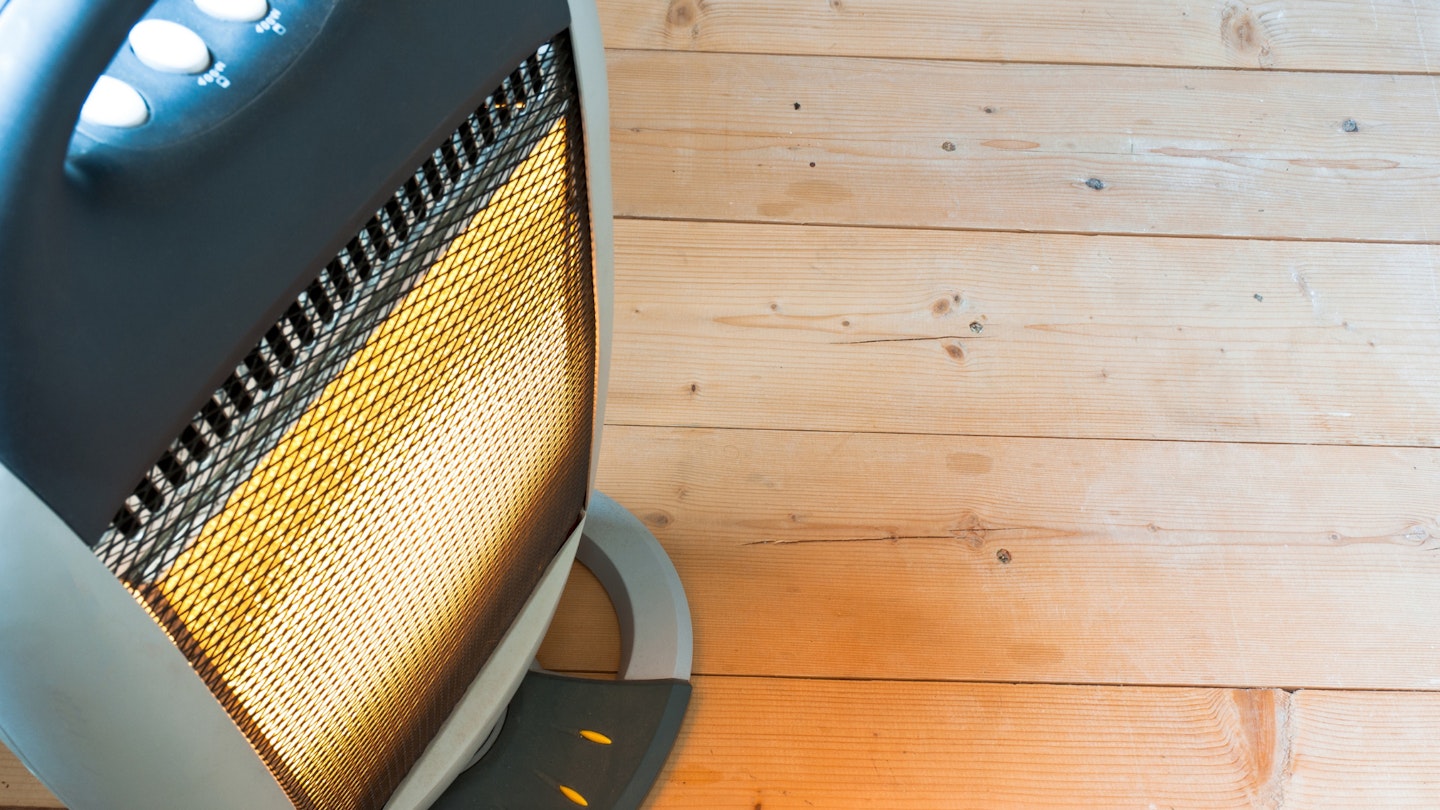
Halogen heaters
Halogen heaters produce radiant heat with halogen elements that are enclosed in lamps or bulbs. They're the same as the ones you find in beer gardens across the UK.
Pros
• Halogen heaters work quickly and are light and portable.
Cons
• They must run continuously for heat, which can make them expensive to run. Most halogen heaters suitable for the home will only heat the area directly in front of it.
Convector heaters
Convector heaters are more suited to larger spaces, like conservatories or living rooms. They have a heating element to warm the air, which then circulates via convection to distribute heat thoroughly.
Pros
• They are almost silent and can be used in large rooms. They're a low fire risk hazard and heat the space around them quickly. They can also be mounted to walls.
Cons
• If you're in a draughty room, it will take longer for it to be heated up as convection heaters move the air around a room. For the same reason, they can disturb dust, which can be problematic for allergy sufferers.
Oil-filled heaters
An oil-filled heater is known in the industry as being very efficient. The oil within the radiator is heated and retains heat well, keeping it warm for long periods of time.
Pros
• They retain heat for a long period of time, acting like a traditional radiator in your home. Once turned off, you'll still feel the heat from an oil-filled space heater. They can heat an entire room efficiently and don't have a fan, so allergy sufferers are not at risk.
Cons
• They can be large and heavy to move, and take a while to heat up. They can also be hot to the touch, so keep children and pets away from oil-filled heaters.
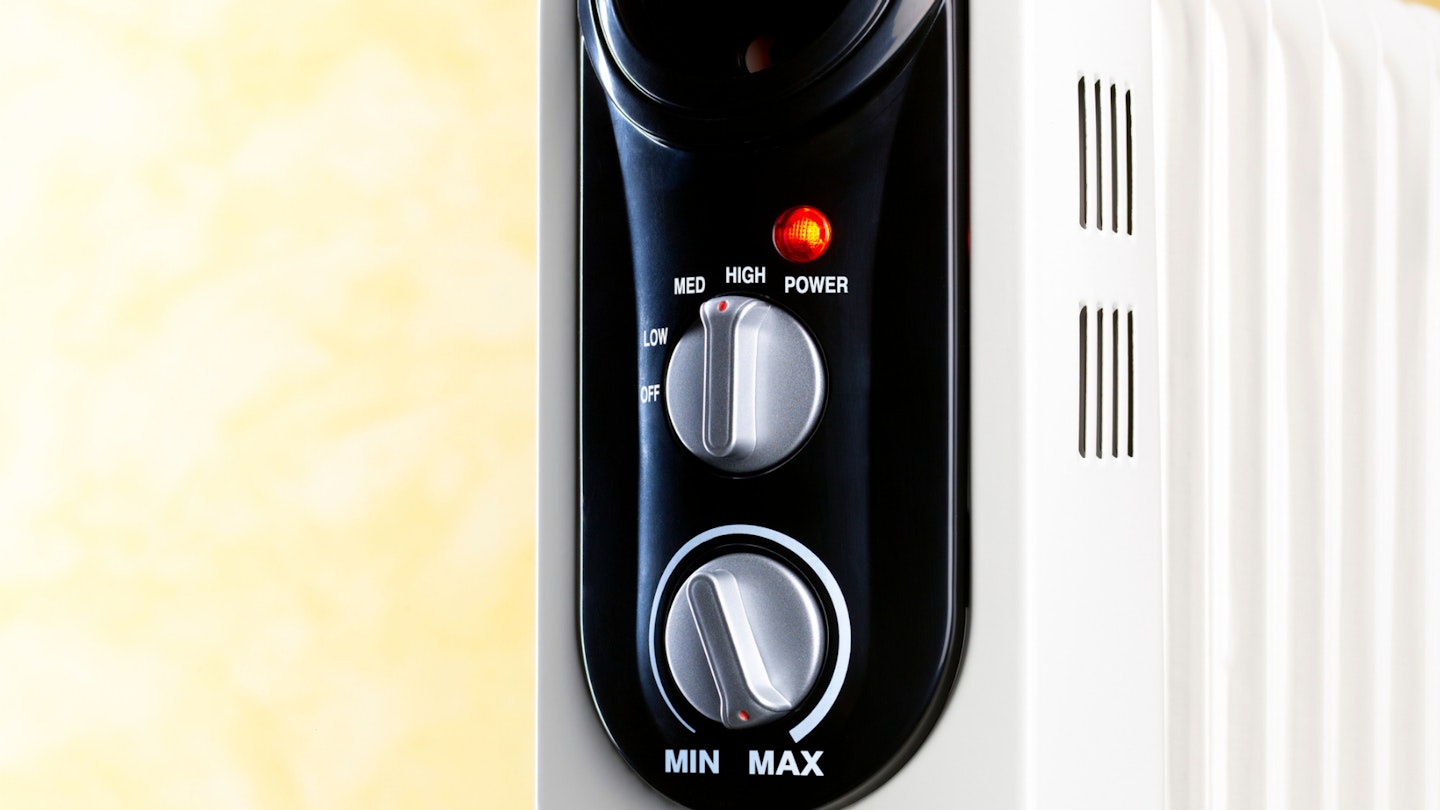
Safety tips for using a portable heater
• Never leave children in a room where there's a portable heater. Not only can the heater get very hot and cause injury, but it could fall over if it isn't fixed to a wall.
• Your portable electric heater will need lots of space, so don't put it underneath, up against or next to furniture or against a wall. Ensure any vents are uncovered.
• Never try to dry your washing on an electric heater as this can cause a fire to occur. According to the London Fire Brigade{
• Don't sit too close to the heater, as you could set your clothes alight.
• Make sure your heater is clean and well-maintained, especially if it's been in storage over spring and summer.
Other tips for staying warm
As well as enjoying your new heater safely, there are some other simple things you can do to get through the cold winter months.
• Wear layers - Yep, your parents were right, if you feel cold, wear more layers!
• Get active - Need a quick warmth boost? Running up and down the stairs for a few minutes or going for a walk outside will help you feel warmer.
• Buy a hot water bottle - One kettle of hot water will keep you feeling cosy for a few hours. They're small, but mighty.
• Block draughts - Closing windows, shutting your curtains and buying a draught excluder could all contribute towards your home retaining heat.
• Rearrange your furniture - If something is blocking your radiator, you won't be feeling the heat as well as you should. See if you can move things around to make it more energy efficient.
What to read next:
Home office decor ideas that will make working from home a breeze
Jade Moscrop is a Content Writer for WhatsTheBest, specialising in lifestyle topics. She also writes for Closer, Heat, and Mother&Baby.
Subscribe to the What’s The Best Newsletter to keep up to date with more of the latest reviews and recommendations from Jade and the rest of the What’s The Best team.
